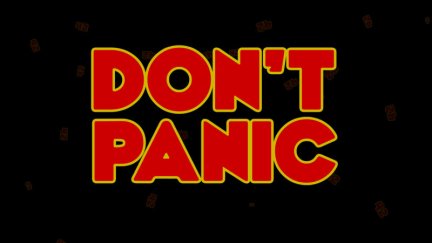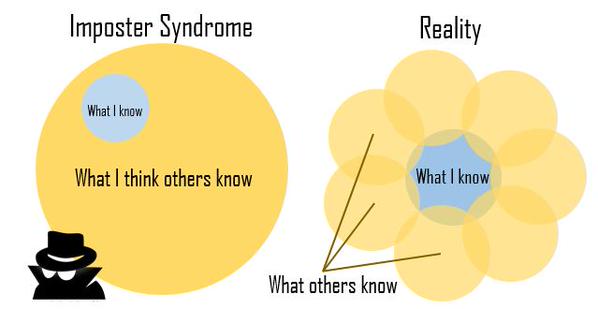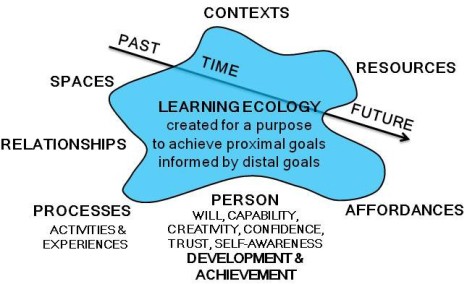
The Hitchhiker’s Guide to the Galaxy has the words Don’t Panic on its cover. Douglas Adams described the text as being in ‘large friendly letters’. This juxtaposition of panic and friendliness suggests being scared is nothing to be afraid of. Last week I was introduced to Senninger’s Learning Zone model. The bright red ring labelled Panic Zone caught my attention. I’ve been in transition between institutions and been asked to write about the impact of this on learning development, in particular from an ecological perspective and with reference to Senninger.

Ecology is the scientific twin of sociology. They both study the diverse, complex relationships between both people and their environments. With regard to my own areas of work, applying the principles of ecology to digital learning environments is an underused approach. How people interact with technology is critical to effective design yet the gaps between the experience of designer and that of the end user are often ignored. I’d looked at ecology in relation to e-teaching and thought writing the piece might be a useful on a number of levels. Not only as a CPD reflection but also an opportunity to disturb some PhD dust and blow away the words Don’t Panic which constantly reappear on the draft thesis chapters.

The core of Senninger’s model is the Comfort Zone. Disrupting this shifts you into the Central Stretch Zone. The analogy is a good one. Change stretches you in all directions but like an aerobic workout, what’s tough at the time aims to make you feel better afterwards. Leaving Comfort Zones can have impact. There’s no going back. It’s like trying to recreate a fabulous holiday by returning the following year. People and places might appear the same but the moment has passed. As Heraclitus tells us, you can’t step in the same river twice.
Surrounding the comfort and the stretch circles is the Panic Zone. This gives the model a dystopian feel but I found the concept reassuring. However familiar you are with the symptoms of Imposter Syndrome, or have taken time out for meaningful self-reflection, it’s easy to take it personally if something doesn’t go quite as planned. Senninger gives us permission to feel a range of negative emotions and – more importantly – to contextualise them within the bigger picture of change.

Fear of change can keep us stuck in situations which are past their use-by date so we trade familiarity for comfortable security. It’s easy to see why. An essential element of dismantling an old world and accepting a new one is to invite temporary fear into your life. For a while you are the outsider, a stranger in the familiarity of others. Change can stretch you to the edges of what you know and this is a challenge. It’s good to remember being in transition is a process with stages. For me, the travel aspect is missing from the Learning Zone model. Norman Jackson’s Learning Ecology Model gives a better sense of the journey and a combination of the two would best represent the change-route travelled.
